- Details
 Over the past decade, Indonesia’s deforestation rate has significantly declined, including in the pulp and palm oil sectors. But now commodity-driven deforestation is making a resurgence in Indonesia according to recent spatial analysis. PT Mayawana Persada which operates a pulpwood concession in West Kalimantan province on the island of Borneo, is leading Indonesia’s new wave of deforestation. The report provides evidence that these companies are linked with Royal Golden Eagle, a corporate group controlled by Sukanto Tanoto that owns the second large paper company in Indonesia: APRIL.
Over the past decade, Indonesia’s deforestation rate has significantly declined, including in the pulp and palm oil sectors. But now commodity-driven deforestation is making a resurgence in Indonesia according to recent spatial analysis. PT Mayawana Persada which operates a pulpwood concession in West Kalimantan province on the island of Borneo, is leading Indonesia’s new wave of deforestation. The report provides evidence that these companies are linked with Royal Golden Eagle, a corporate group controlled by Sukanto Tanoto that owns the second large paper company in Indonesia: APRIL.
- Details
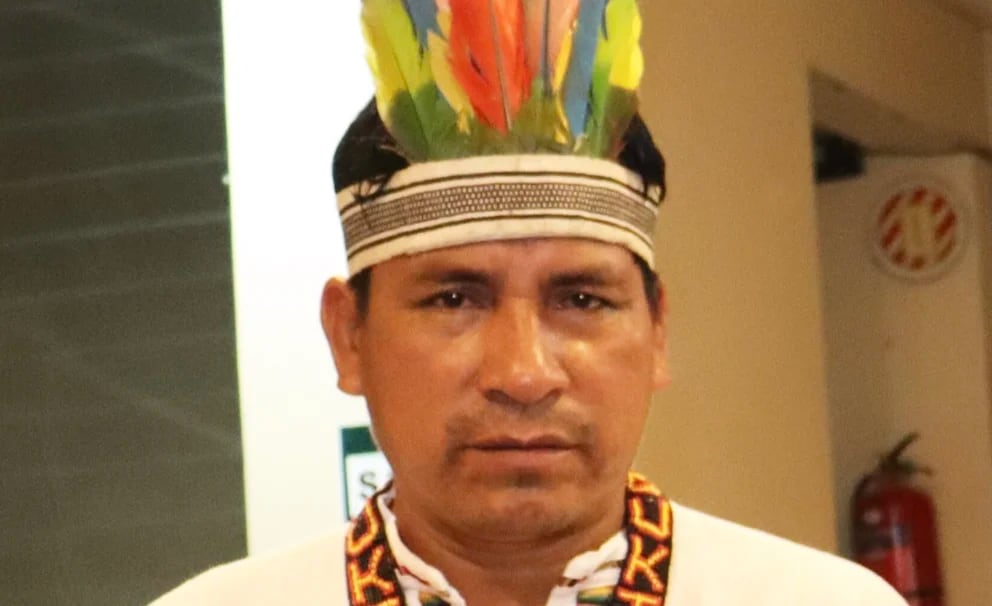 Quinto Inuma Alvarado, Kichwa tribal leader has been shot to death in an area of the Peruvian rainforest that's seen high tensions between Indigenous people and illegal loggers. He was attacked as he was returning from presenting at a workshop for women environmental leaders in the San Martín region of the Amazon on Wednesday. Peruvian police confirmed his death.
Quinto Inuma Alvarado, Kichwa tribal leader has been shot to death in an area of the Peruvian rainforest that's seen high tensions between Indigenous people and illegal loggers. He was attacked as he was returning from presenting at a workshop for women environmental leaders in the San Martín region of the Amazon on Wednesday. Peruvian police confirmed his death.
- Details
 A plantation project in Papua has destroyed thousands of hectares of rainforest and decimated the traditional food sources of indigenous peoples, an investigation by The Gecko Project found. Indonesian government support for biomass project raises questions over the consistency of its climate change policies.
A plantation project in Papua has destroyed thousands of hectares of rainforest and decimated the traditional food sources of indigenous peoples, an investigation by The Gecko Project found. Indonesian government support for biomass project raises questions over the consistency of its climate change policies.
- Details
 A new investigative report, Pulping Borneo, finds that the Royal Golden Eagle (RGE) Group, the world’s largest viscose producer and major paper products company, continues to rely on deforestation in its supply chain despite a high-profile commitment to “No-Deforestation”. The report, co-published by five organizations, also reveals a chain of offshore shell companies pointing to RGE Group control behind a new mega-scale pulp mill in North Kalimantan, putting some of the world’s largest remaining rainforests at risk.
A new investigative report, Pulping Borneo, finds that the Royal Golden Eagle (RGE) Group, the world’s largest viscose producer and major paper products company, continues to rely on deforestation in its supply chain despite a high-profile commitment to “No-Deforestation”. The report, co-published by five organizations, also reveals a chain of offshore shell companies pointing to RGE Group control behind a new mega-scale pulp mill in North Kalimantan, putting some of the world’s largest remaining rainforests at risk. - Details
 554 scientists wrote a letter to the European institutions urging them to assure "protection and restoration of natural forests is beneficial both for the climate and for biodiversity". Between "conservation of biodiversity and addressing climate change and, on the other hand, the short-term economic gain provided by logging" they say, "the former should prevail. Therefore, we urge the commission to take immediate steps to drastically reduce logging throughout the EU."
554 scientists wrote a letter to the European institutions urging them to assure "protection and restoration of natural forests is beneficial both for the climate and for biodiversity". Between "conservation of biodiversity and addressing climate change and, on the other hand, the short-term economic gain provided by logging" they say, "the former should prevail. Therefore, we urge the commission to take immediate steps to drastically reduce logging throughout the EU."
Subcategories
Biodiversity
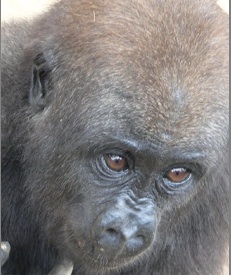
World forests are home to a large number of the world's plant and animal species, including many endangered species. They are the habitat for about two-thirds of terrestrial species. As forests are cut down, many species are doomed to extinction. Some rainforest species can only survive in their natural habitat.
Tropical rainforests support the greatest diversity of living organisms on Earth. Although they cover less than 2% of Earth's surface, rainforests house more than 50% of plants and animals on Earth. Here are some examples of the richness of rainforests:
- rainforests have 170,000 of the world's 250,000 known plant species
- the United States has 81 species of frogs, while Madagascar which is smaller than Texas, may have 300 species.
- Europe has 321 butterfly species, while a park in the rainforest of Peru, Manu National Park, has 1300 species.
According to the IUCN there are now almost 45,000 species considered at risk of extinction. Our closest relatives in the animal world: chimpanzees, gorillas and orangutans, are destined to become extinct within the next few decades if we continue to destroy the forests that host them. Every day, 50 to 130 species become extinct. We are facing the most dramatic wave of extinctions since the disappearance of the dinosaurs 65 million years ago.  An ecological disaster is happening at an unprecendented rate; previous crisis played out over millions of years, and in the presence of natural disasters.
Forests and Climate
 Deforestation is responsible for around one fifth of global greenhouse emissions.
Deforestation is responsible for around one fifth of global greenhouse emissions.
Forests are like a huge machine that constantly cleans the air. The vegetation of a rainforest absorbs tons of carbon dioxide through photosynthesis and in turn releases oxygen. Each tree produces an average of 20-30 litres per day, and although this is then absorbed in a budget of substantive equality, it is essential to the lives of millions of beings. In contrast, the destruction of forests, especially through fire (to cleanse the soil), burns oxygen and releases carbon into the atmosphere.
Much rainforest clearance in Indonesia is taking place on peatlands. This yields massive additional carbon emissions as the rich organic peat oxidizes or burns. With the loss of rainforest ecosystems we lose one of the planet’s greatest carbon capture and storage systems and best adaptation mechanisms for global warming (up to 300 tons of carbon per hectare).
Solutions
 Ancient forests are a legacy that provide us the life.
Ancient forests are a legacy that provide us the life.
Forests are our air, water, climate. Without the forests indigenous peoples and animal species will desapperar. Without the forests, no one has a future.
The forests are under threatened by unscrupulous companies looking for woods, from landowners and farmers producing crops for the international markets.
Half of the original forests were already destroyed, and only a fifth is still intact. The technological revolution has made profitably exploitable even the most remote forests. As soon a forest is exhausted, markets move to another region, and the devastation begins again and again.
Technology is not just about destruction. It also offers a number of solutions to save the forests. We are at a crossroads. If nothing is done now, we will lose the forests forever.
Recycling 1000 kg of newspapers ...

-> saves, on average, up to 17 trees
-> saves 3 cubic meters of landfill
-> saves 31.780 liters d'acqua
-> saves, on average, up to 17 trees
-> saves 3 cubic meters of landfill
-> saves 31.780 liters d'acqua
-> Saves 31,780 liters of water
-> Produces 75% less air pollution
-> Produces 35% less water pollution.
-> Save enough energy to supply a house for 6 months
-> Consumes half (57%) than the energy used to produce one ton of paper from virgin fiber
Recycled paper is usually bleached mechanically, without need of bleaching chemicals.
Also be FSC certified recycled paper (choose the 100% recycled), but the traditional certification for recycled paper is the Blue Angel.

Buy good wood
Smart consumers
Act now!
Deforestation
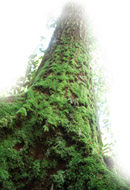
Ancient forests are a legacy that provide us the life.
Forests are our air, water, climate. Without the forests indigenous peoples and animal species will desapperar. Without the forests, no one has a future.
Half of the original forests were already destroyed, and only a fifth is still intact. The technological revolution has made profitably exploitable even the most remote forests. As soon a forest is exhausted, markets move to another region, and the devastation begins again and again.
Technology is not just about destruction. It also offers a number of solutions to save the forests. We are at a crossroads. If nothing is done now, we will lose the forests forever.
Illegal logging
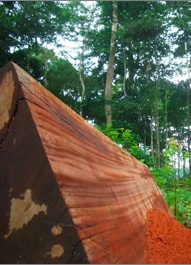
Illegal logging is one of the main causes of deforestation and causes considerable environmental damage and biodiversity loss. It has serious implications for climate change, often ignores the rights of indigenous people, and make forests more vulnerable to fires.
Illegal logging is the harvest, transportation, purchase or sale of timber in violation of laws. The harvesting procedure itself may be illegal, including using corrupt means to gain access to forests; extraction without permission or from a protected area; the cutting of protected species; or the extraction of timber in excess of agreed limits.
According to OSCE, illegal logging imoves around 150 billion USD annually. It is estimated that illegal logging in public lands alone causes losses in assets and revenue in excess of 10 billion USD annually.
A significant proportion of timber from certain countries currently sold in the EU is thought to come from illegal sources.
Illegal logging contributes to deforestation and by extension global warming, causes loss of biodiversity and undermines the rule of law. These illegal activities undermine responsible forest management, encourage corruption and tax evasion and reduce the income of the producer countries, further limiting the resources producer countries can invest in sustainable development. Illegal logging has serious economic and social implications for the poor and disadvantaged. Furthermore, the illegal trade of forest resources undermines international security, and is frequently associated with corruption, money laundering, organized crime, human rights abuses and, in some cases, violent conflict. In the forestry sector, cheap imports of illegal timber and forest products, together with the non-compliance of some economic players with basic social and environmental standards, destabilise international market
With illegal and destructive logging, food supplies are gone and sacred sights are damaged. Rivers and streams become muddied and polluted, killing local reefs and fish stocks. People suffer violence and abuse. New diseases spread and the medicines, which once protected people from illness, are lost. The traditional ceremonies, skills and way of life are disrupted. Communities' subsistence lifestyle supported by the forest for thousands of years turns to poverty overnight.
Indigenous peoples
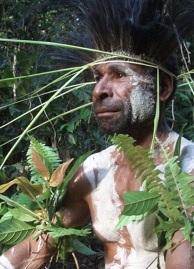
Forests supports hundreds of indigenous cultures and creatures found nowhere else in the world. They ensure the survival of 1.2 billion people;
Hidden treasures: The forests provide food, fiber, medicines.
World forests are home to tribal people who rely on their surrounding for food, shelter, and medicines. Today very few forest people live in traditional ways; most have been displaced by outside settlers or have been forced to give up their lifestyles by governments.
Of the remaining forest people, the Amazon supports the largest populations, though these people too, have been impacted by the modern world. While they still use on the forest for traditional hunting and gathering, most Amerindians, as these people are called, grow crops (like bananas, manioc, and rice), use western goods (like metal pots, pans, and utensils), and make regular trips to towns and cities to bring foods and wares to market. Still these forest people can teach us a lot about the rainforest. Their knowledge of medicinal plants used for treating illness is unmatched and they have a great understanding of the ecology of the Amazon rainforest.
In Africa there are native forest dwellers sometimes known as pygmies. The tallest of these people, also known as the Mbuti, rarely exceed 5 feet in height. Their small size enables them to move about the forest more efficiently than taller people.
In Papua New Guinea unique and isolated communities, with over 800 language groups just in Papua New Guinea alone, have lived for generations alongside some of the world's greatest biodiversity.
Plantations
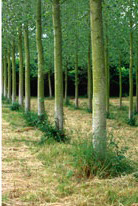
A forest is much more than a number of trees, a forest a complex and dynamic ecosystem.
Green deserts. They are immense extensions of trees. They have all of the same age, they looks all the same. Often they are coming from other continents.
A forest is much more than a number of trees. A forest is a dinamyc and complex ecosystem.
Plantations are agricultural cropland based on trees, mostly based on a single specie. Throughout the world, governments are actively promoting the expansion of large-scale monoculture tree plantations, despite the serious social and environmental impacts already witnessed on existing plantations.
The expansion of plantations often takes place at the expense of transforming natural ecosystems, particularly tropical rainforests.

Also ancient and delicate natural habitats such as grasslands of South America and South Africa, are being replaced with plantations of eucalyptus and pine. Rapid growth trees, have high economic performance, but erode the soil, disrupt the balance in the chemical and physical composition of the soil, absorb large amounts of water, and in some cases led to the desertification of entire areas.
Biofuel, agrofuel, biomasses
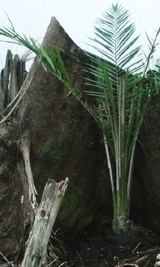 Biodiesel or biofuel is a fuel produced from plants. It is renewable (unless there is land enough). However, this doesn't mean it is environmentally friendly, exactly because the there is not enough croplands in the world.
Biodiesel or biofuel is a fuel produced from plants. It is renewable (unless there is land enough). However, this doesn't mean it is environmentally friendly, exactly because the there is not enough croplands in the world.
The expansion of biofuel production involve additional land use. Even modest usages of biodiesel would consume almost all cropland in some countries in Europe. Switching to biodiesel on a large scale requires considerable use of arable area. And lthis and area is taken up from forests or from food cropland.
When burned, biodiesel emits less carbon than diesel or gasoline, but the damage has already been done. Biofuel became one of the most environmentally damaging commodities on the planet.
The expansion of palm oil production is one of the leading causes of rainforest destruction in south-east Asia. In Indonesia and Papua New Guinea are the Malaysian companies to drain the swamp forests and peat bogs, then burn and then make palm oil plantations, while millions of tons of peat going up in smoke, entering into the atmosphere huge amount of carbon was calculated that, for this reason Indonesia has become the fourth largest emitter of greenhouse gases. Oil palm plantations are now expanding in Africa and South America.
Much rainforest clearance in Indonesia is taking place on peatlands, which yields massive additional carbon emissions as the rich organic peat oxidizes or burns. With the loss of rainforest ecosystems we lose one of the planet's greatest carbon capture and storage systems and best adaptation mechanisms for global warming (up to 300 tons of carbon per hectare).




